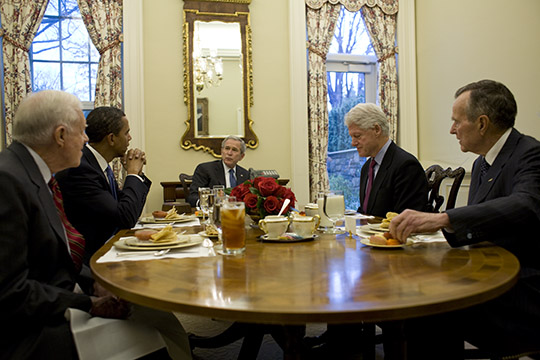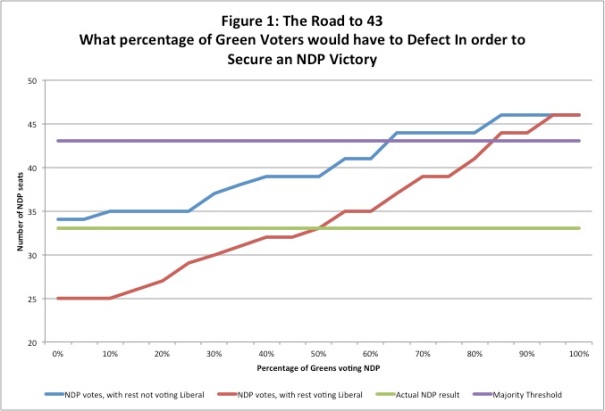Hi all. Posting has been sporadic, to put it mildly, as I wrap up my dissertation. In the meantime, I’m happy to present this thought-provoking overview of the health of Canada’s democracy by UBC alumnus Chris Tenove. Chris is now a Postdoctoral Research Fellow at the University of Toronto’s Centre for Ethics and Munk School of Global Affairs. He lives in Vancouver.
By Chris Tenove
Whatever happens in Monday’s election, many Canadians will wake up disappointed on Tuesday. The local representative we voted for will have lost, or our preferred party will not form government. It’s therefore worth remembering why democracy is the best political system for those who are on the losing side of elections, and not just for the winners.
Three features make losing more palatable and less dangerous in democracies – the legitimacy of elections, checks and balances on executive power, and a democratic culture of inclusion. Unfortunately, the Conservative government has undermined all three.
First, in functioning democracies, elections produce a government that is legitimate. We may be disappointed but we do not feel cheated, since each person had an equal opportunity to vote and each vote counted (more or less) equally.
However, with the misnamed Fair Elections Act, the Conservative government undermined fair and equal participation. The Act reduces Elections Canada’s programs to encourage voting, and takes away vouching or Voter Information Cards as sufficient proof of identification at polling stations. These changes are expected to make voting more difficult for thousands of people, with a greater impact on people less likely to vote Conservative, including student, indigenous and poor voters. The Act also reduces Elections Canada’s role in policing electoral laws.
Beginning Tuesday, we need to see how these changes affected the election. If people have faced unequal obstacles to voting, and if any party violated electoral laws as the Conservative party has in the past, we need to root out failings. Whether or not we pursue new voting systems, as the NDP and Liberals have proposed, we need to make sure that Canadian elections are increasingly equal, open and fair.
Second, elected governments face several institutional checks and balances, which help protect vulnerable groups and those on the losing side of elections.
Chief among these is the division of powers among the executive, legislative and judicial branches. Stephen Harper’s record here is clear: he has consolidated power in the Prime Minister’s Office to a degree not seen previously in Canadian history. The legislative branch is a ghost of its former self, with honest debate stifled in the House of Commons and Committees, with omnibus bills rammed through without sufficient time for study, and with MPs given little independence or authority.
The judicial branch has been threatened (including public attacks on Chief Justice McLachlin), and its rulings have sometimes been subverted or ignored. For instance, the Federal Court found the Conservative policy limiting health care for refugee claimants to be “cruel and unusual,” and ordered the government to reinstate preexisting coverage until there was a new policy or a successful appeal. Instead, the government simply disregarded the ruling, not only harming this vulnerable group but the rule of law itself.
The Senate, too, is supposed to act as a check and balance. Its ability to represent Canada’s regions and improve policies was compromised before Stephen Harper became prime minister. But as we learned from the Mike Duffy trial, the Prime Minister’s Office put great effort into corrupting the Senate in private, while publicly attacking its credibility and delaying meaningful reform.
The Conservative government has also chipped away at the quality and openness of the public service. We want our public servants to develop policies in a transparent, innovative and evidence-based manner. Instead, we have seen knowledge smothered, facts ignored, and government units re-purposed as advertising agencies for Conservative ministers.
Beginning Tuesday, we will need to reinvigorate these institutions that improve our public programs and restrain an overly powerful executive office.
This takes me to our democracy’s third major defense of those who are on the losing side of elections, one that is even more fundamental than fair elections and democratic institutions. That is a culture of tolerance, curiosity and care among our diverse citizens. Such a culture prompts us to work together with citizens on the goals and problems we share, and to aid those who are attacked or neglected.
This is why electoral tactics of stigmatization and dishonesty by the Conservatives has been so galling. Whether singling out wearers of the niqab as un-Canadian, promoting xenophobia through a “barbaric cultural practice” hot line, or spreading falsehoods to targeted audiences (such as advertising in Chinese and Punjabi media that Liberals plan to sell pot to kids), the Conservative party has shown a willingness to win votes by poisoning our political culture. This, too, must now be restored.
Democracy in Canada remains deeply entrenched. Whoever wins the election on Monday will have done so in a fairly legitimate process, will face laws and institutions that help guard against abuse of power, and will govern a country with admirable trust and concern among its diverse citizens. But whoever takes office on Tuesday should reverse the anti-democratic policies that Conservatives have pursued in recent years, and work to make democracy in Canada stronger.
Photo:B.C. NDP Leader Adrian Dix walks away from the podium and leaves the stage after conceding defeat in the provincial election in Vancouver, B.C., on Tuesday May 14, 2013. THE CANADIAN PRESS/Darryl Dyck












